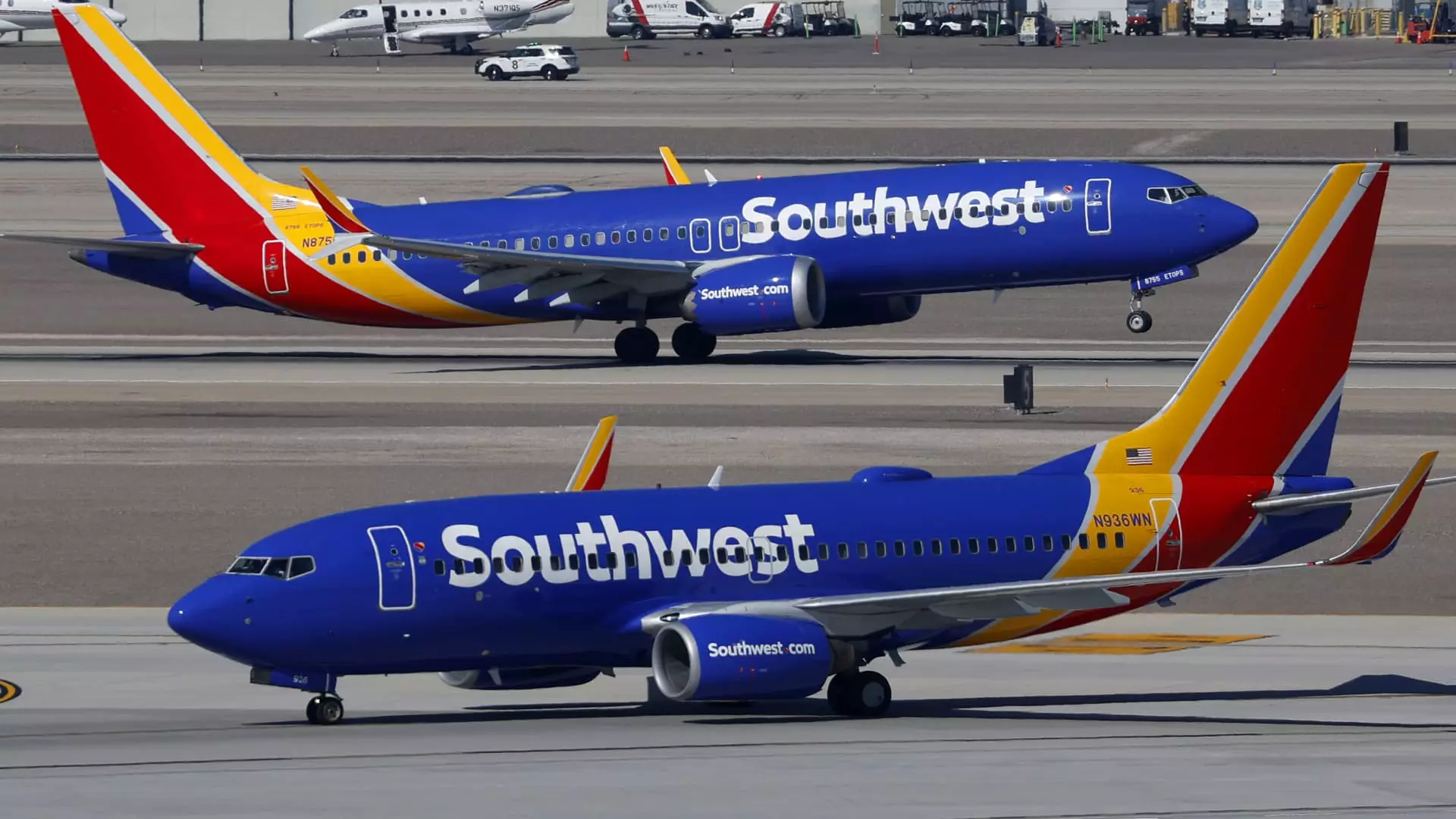Southwest Airlines, renowned for its pioneering open seating policy, is making a dramatic pivot by transitioning to assigned seating. This decision, set to unfold on January 27, marks the end of over five decades of a unique business approach that fostered spontaneity and democratized boarding. While the airline describes this change as an effort to optimize operational efficiency and revenue streams, it also signifies a rejection of its core identity—favoring flexibility and customer control. The move underscores Southwest’s recognition that staying competitive in a rapidly changing airline industry demands adaptability, even if it means abandoning long-held traditions.
This policy overhaul signals more than just a logistical adjustment; it challenges Southwest’s very brand essence. For decades, passengers flocked to Southwest precisely because they could choose their preferred seats on the fly, often securing strategic positions or simply embracing the chaos of free-for-all boarding. Removing this element introduces a new dynamic, potentially alienating loyal customers who valued the airline’s unstructured approach. Moreover, the transition to assigned seats could result in a more rigid, less spontaneous travel experience—a stark departure from the airline’s legacy of customer-centric flexibility.
Financial Strategies: New Revenue Streams at the Cost of Customer Loyalty?
Southwest’s decision to introduce assigned seating is driven partly by the desire to boost profitability—eying an anticipated $800 million increase in earnings before interest and taxes this year alone, climbing to $1.7 billion by 2026. Central to this effort is the sale of seat assignments, which are expected to become a new source of ancillary revenue, paralleling strategies successfully employed by competitors. However, the airline remains reticent about specific pricing structures, which vary across rivals depending on route and demand, leaving customers uncertain about costs until their purchase.
Additionally, Southwest’s broader overhaul includes new baggage fees and a reconfigured fare structure. While top-tier loyalists are initially protected, the pressure to generate additional revenue impacts the entire customer base, subtly shifting the airline’s mantra from customer-friendly to profit-focused. This shift raises questions: Will passengers accept these fees without perceiving a decline in service quality? Or will these policies create a sense of disconnect, pushing customers to rival carriers that still prioritize free checked bags and open seating as core features?
The move toward pay-to-choose models also indicates a strategic focus on segmenting customers based on their willingness to pay. For the airline, this is a gamble—while some passengers may appreciate personalized seating options, others could perceive the added costs as a betrayal of Southwest’s original promise of affordable, no-frills travel. As such, the airline is gambling on balancing profit motives with maintaining a semblance of loyalty among its most dedicated travelers.
Operational Efficiency vs. Customer Experience: Can the Balance Be Maintained?
The transition to assigned seating aims to streamline boarding processes and reduce delays—an ongoing pain point in the airline industry. Southwest’s internal models suggest that a structured boarding system can accelerate turnaround times and improve on-time performance. Still, efficiency concerns come with a trade-off: the loss of the dynamic and communal atmosphere that open seating fosters.
Boarding now will be organized into eight groups, prioritized by loyalty status, ticket class, and purchase of ancillary services. Top-tier frequent flyers and premium ticket holders will board first, ostensibly rewarding loyalty and spending. However, for the average passenger, this might diminish the spontaneous camaraderie and sense of control that characterized Southwest’s previous boarding process. Families and travelers who cherished the ability to pick seats on the spot may find the new system restrictive, potentially impacting customer satisfaction.
The airline has invested in reconfiguring its fleet to include extra-legroom seats and offers ancillary services like early boarding, which are designed to cater to different customer segments without entirely abandoning the original ethos. Still, the success of these strategies hinges on execution. Will customers perceive the new policies as enhancements or as mere revenue leaks? The challenge lies in maintaining the perception that Southwest remains a friendly, customer-focused airline even as it adopts more transactional practices.
Implications for Loyalty and Brand Identity
Ultimately, Southwest Airlines’ shift signals a reevaluation of what loyalty means in a highly competitive environment. Since the airline’s inception, its reputation has been built on accessible prices, open seating, and a culture of friendliness. Moving toward paid seat assignments and dynamic boarding groups risks alienating its most dedicated patrons, who see these policies as a departure from the values that initially attracted them.
Yet, the airline also intends to reward loyalty through prioritized boarding and exclusive options, an approach that tries to blend tradition with the modern need for revenue diversification. The real test will be whether Southwest can strike a middle ground—preserving its identity as a customer-centric airline while embracing innovations that ensure long-term financial sustainability.
In the end, the shift reveals an uncomfortable truth about the airline industry: survival in a landscape dominated by profit-chasing giants requires tough decisions, even if they risk compromising the authenticity of the brand. Southwest’s gamble on assigned seating and new fee structures might deliver short-term financial gains, but at what long-term cost to its reputation? Only time will reveal whether this bold transformation will secure its future or threaten its soul.


Leave a Reply